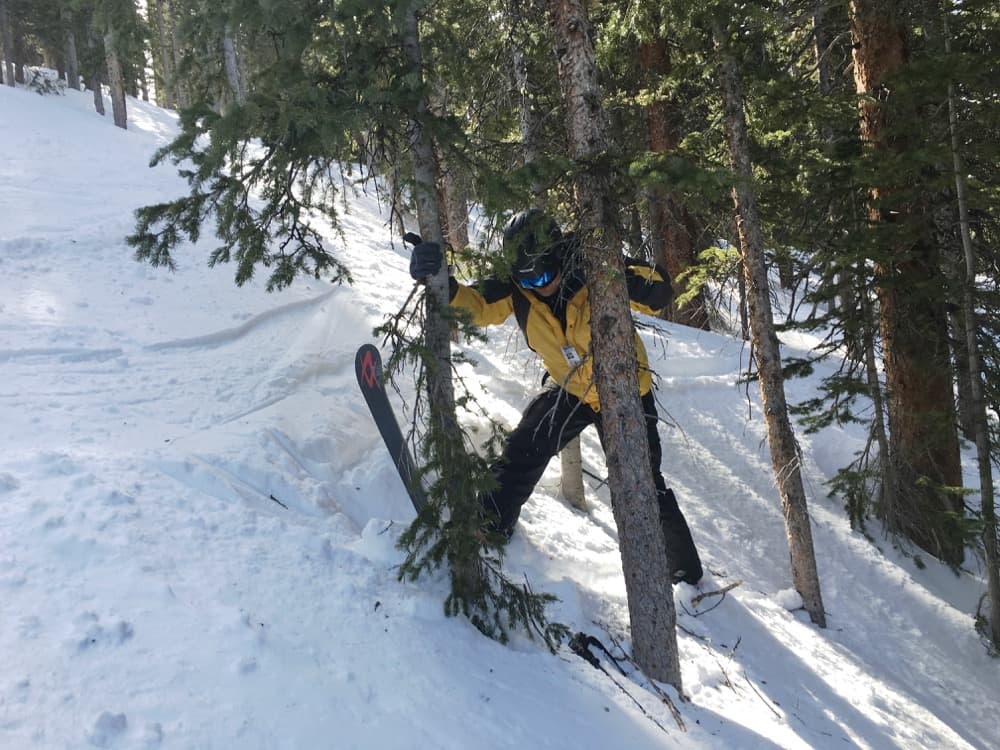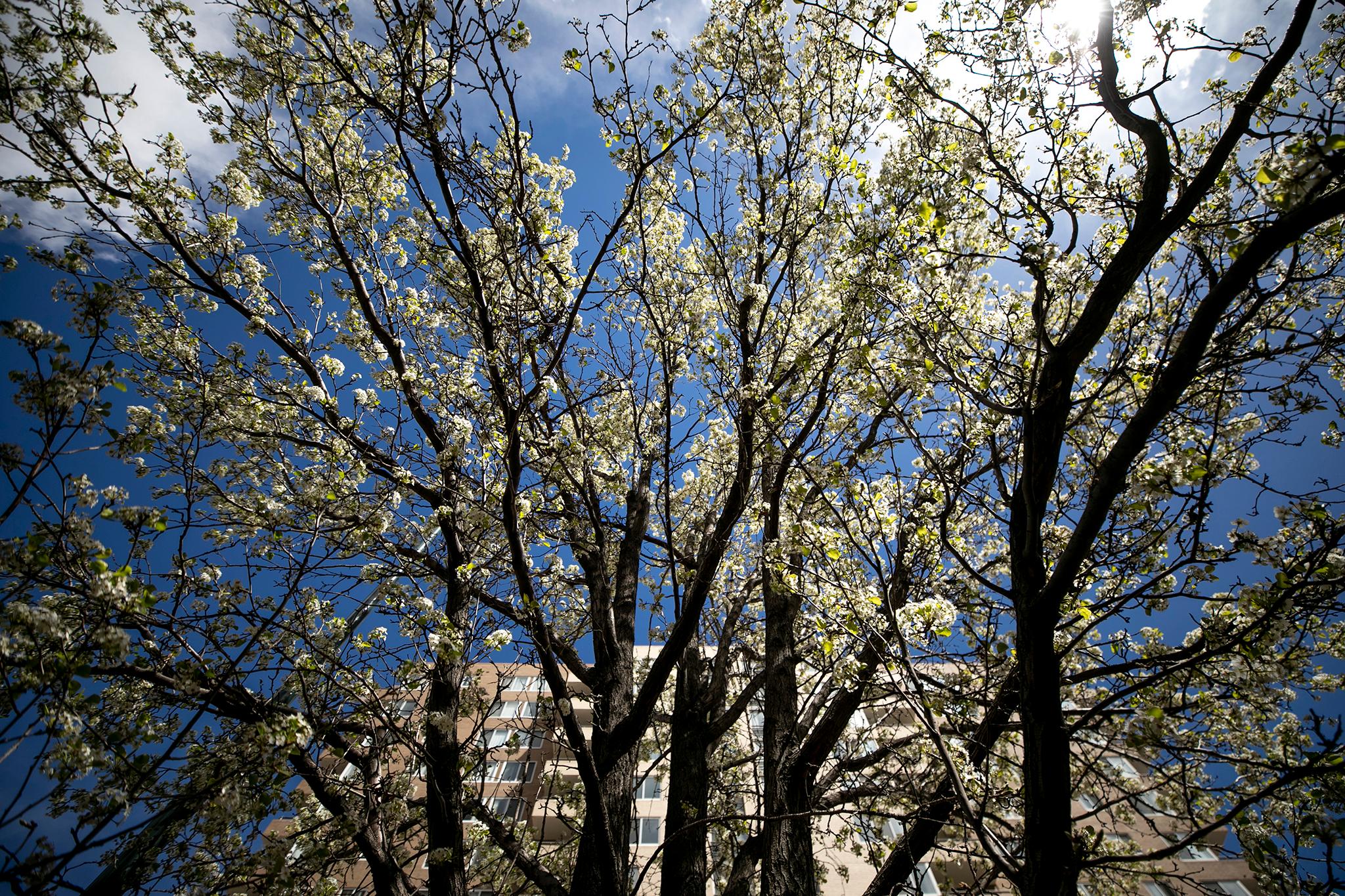
Skiing is obviously a bad idea. Planks of wood, steep slopes, fragile human bodies -- terrible combination, honestly.
What's amazing, though, is the sheer variety of ways that alpine sports will find to break your body. I've been researching this topic face-first for years, and now it's time that we all share the innovative ways we've been rekt.
Hopefully this will spare one of you an injury. If you want to contribute a warning or a story, email me. And, please, share it with all the other dummies.
That powder stash was untouched for a reason:
I once found a run of untouched tree skiing many days after the last snowfall. A buddy and I dove in and made a few nice turns. Then I flew out of my skis.
Snow tends to get stickier as it sits in the shade. Eventually, it can get heavy enough that it will grab a hold of any ski or board that dips down into it.
"It grabs you," says Jeremy Johnston, a former ski racer and owner of Boot Mechanics. "The second you start making a turn, the ski's going to go down and the snow will grab you."
The torque can be bad enough to tear or torque your ACL. In my case, it managed to pop my bindings. I had a nice Wile E. Coyote moment in the air before the tree found my femur. I could hardly move my leg for a week afterward, and I'm sure I could have broken myself if it had caught a weaker bone.
Also: Tree wells, the deep snow sinks near trees, can trap and suffocate you. Ski glades with partners.
Change your body, change your bindings:
Here's one submitted by a reader: David Conklin lost 50 pounds and got himself into his best athletic condition in 25 years. When the first real snow fell this past December, he excitedly hit Copper Mountain.
Unfortunately, he took a twisting, low-speed fall near the bottom of the mountain. He hadn't adjusted his DIN settings for his lower body weight, so his ski binding didn't properly release his foot, breaking his fibula and tearing up his ankle, as he told me in an email.
"With an earlier release," he wrote, "there would have been no broken leg." He says he's embarrassed about it, but I think this is a very sneaky ski injury, and I'm glad he shared it. (Email me with your own.) Never forget the little details.
Danger over the horizon:
Colorado's mountains share one thing with the East Coast resort: Superhighway groomers down the main face. Fun!
Colorado mountains are also a lot more willing to let moguls develop than the places I grew up. Sometimes you'll even find them hidden by a slight elevation change at the bottom of one of the fastest runs on the mountain.
In fact, groomed intermediate runs have been the site of most Colorado skiing deaths, according to a Denver Post analysis.
Your boots are the devil:
Johnston was exiting the lift for one of his first runs one day. He took a "weird, funny turn, and my foot kind of lightly rotated in the boot while I hit a bump or compression," he says.
Snap. "I literally shattered all the cartilage on my ankle." He figures a quick binding adjustment at the beginning of the day might have kept his foot in place and prevented the injury. "I hadn’t really buckled down very well," he figures.
Getting there is half the battle:
Repeat after me: 4WD ain't perfect.
Your boots are the devil again:
I'll spare you the details, but I'm saying a long goodbye to two of my favorite toenails right now.
"A lot of times, the cause is the toe is just hitting the front of the boot," Johnston says. "What’s causing that is one of two things ---either, A, the boot’s too short -- or B believe it or not, the boot’s too long, allowing the foot to go forward and backward."
Both problems can be adjusted by a boot-fitter, such as Johnston's Boot Mechanics shop in Golden. REI also will do some degree of boot molding for free, but it's not a full-on tune-up.
Your backpack is a hazard:
I feel like I've seen a lot fewer backpacks since a guy ended up hanging unconscious by his straps from a lift at Arapahoe Basin, only to be rescued by a friend's spider-monkey antics.
If you must bring it, consider taping the loose straps up and holding the pack in front of you, rather than wearing it over the back of the chair.
Your hands are not your friends:
I take a pretty cautious approach to moguls, but I still manage to get injured because I can't break one stupid habit: Holding onto my poles.
I end up punching down as I fall, catching my knuckles or thumb between my stupid pole and the cruel, cruel crud. It's a painful mistake, and it can happen anywhere on the mountain.
Recently, this kind of fall left my index finger locked in a bent position for hours. Not great for someone who types for a living. And it could have been much worse -- a boutonniere injury (where the tendon is damaged) can take weeks or months to heal. Skier's thumb is a very similar injury.
Your best chance to avoid this is to make sure you're holding the pole right, according to a post by Dr. Dan Hehir of Telluride Medical Center. He suggests "putting your hand up through the strap and then down onto the pole grip." (See figure 3 for his suggested way; figure 4 is the wrong way.)
This grip makes it more likely the pole will escape the hand as you fall. Of course, you still have to remember to drop the pole. Also, you could just cut off your straps if you don't mind losing your poles occasionally.
Furthermore, I really shouldn't be using my hands to break my falls at all. "The urge to brake with your limbs leads to damaged shoulders and broken collarbones. If you can, try to absorb the impact by rolling into the fall," Outside Magazine suggests.
Lastly:
Wear a helmet, and be aware that helmets become significantly less protective after a single crash. Even an impact from one to two feet can compromise the helmet, requiring replacement, Outside reported. Even without crashes, helmets should be replaced every five years to account for standard wear and tear.












